Halloween or Hallowe’en is derived from “All Hallows’ Eve”, the eve or vigil before the Western Christian feast of All Hallows (or All Saints) which is observed on November 1. Being raised in the United States, I feel I have a good handle on the US traditions but I don’t know much about how it is celebrated in other parts of the world.
GERMANY
Halloween in Germany has one main tradition which is that all knives are put away for the fear of the spirits hurting them. In Germany Halloween wasn’t popular until the 1990’s. Kids don’t Trick or Treat, but it is becoming more popular. It is because of another tradition that is held eleven days later. On St Martinstag, the children go door to door with a lantern and sing songs for baked goods and sweets.
CHINA
Halloween in Hong Kong has two traditions. The first involves the event called “Yue Lan” (Festival of the Hungry Ghosts). Its emphasis is less on celebration, rather it is an opportunity to give gifts to spirits of the dead to provide comfort and ward them off.
The second and more commercialized event is celebrated by expatriate Americans or Canadians. Hong Kong Disneyland and Ocean Park (Halloween Bash) host annual Halloween shows. Lan Kwai Fong bars will be decked out with Halloween decorations to lure ex-pats and locals interest in Halloween.
Traditional “door-to-door” trick or treating is not commonly practiced in Hong Kong due to the vast majority of Hong Kongresidents living in high-rise apartment blocks. The only instances of street-level trick or treating to be found in Hong Kong occur in ultra-exclusive gated housing communities such as The Beverly Hills populated by Hong Kong’s super-rich. For the general public, there are events at Tsim Sha Tsui’s Avenue of the Stars that try to mimic the celebration.
JAPAN
PHILIPPINES
Trick-or treating is gradually replacing the tradition of Pangangaluluwà, a local version of the old English custom of souling. Some provinces in the Philippines still celebrates “Pangangaluluwa” by forming a group that will go house to house and offer a song in exchange for money or food. But like other traditions, this tradition is starting to fade. The custom had Filipino children singing carols about the souls in Purgatory and asking for abúloy(alms for the deceased) to pay for Masses for the dead. Along with the requested alms, householders sometimes gave the children súman (rice cake). During the night various small items, such as items of clothing, plants, etc., would “mysteriously” disappear, only to be discovered the next morning in the yard, or in the middle of the street. In older times, it was believed that during Halloween, spirits of loved ones visit and manifest their visit by taking an item.
The prevalence of Western media helped spread the celebration of Halloween, particularly the custom of dressing in costume and trick-or-treating, beginning in the 1960s. Its popularity has steadily risen over the decades. Seasonal decorations and costumes are now widely available, while horror-themed marketing, films, and television programmes are commonplace. Many people return to home provinces to visit and tend the graves of loved ones.
SINGAPORE
Singapore Chinese celebrates “Zhong Yuan Jie / Yu Lan Jie” (Hungry Ghosts Festival, some sort of Chinese Halloween) during lunar seventh month. It is believed that the gates of hell are opened and the spirits come back to visit their families. Throughout the month, there will be Chinese Opera and live music performances on a temporary setup stage and outdoor banquet dinner near the stage in various districts of Singapore. These performances and banquets are funded by residents of the individual district.
In recent years, Halloween celebration is becoming more and more popular in Singapore, with influences from the west and probably the fun element of Halloween. In 2011, netizens are raging because Wildlife Reserves Singapore decided to cancel its Halloween event. In 2012, there are over 19 major Halloween celebration events around Singapore. In 2013, Universal Studios Singapore Halloween Horror Nights is coming back for the third time. Sentosa Spooktacular is back for the fifth time since 2009. Museum of Horrors is back for the fourth time.
AUSTRALIA
Halloween is growing in momentum in Australia, in spite of seasonal differences and the transition from winter to summer. Criticisms stem largely from the fact that Halloween has little relevance to Australian culture. It is also considered, by some Australians, to be an unwanted American influence; as although Halloween does have Celtic/European origins, its increasing popularity in Australia is largely as a result of American pop-culture influence. Supporters of the event claim that the critics fail to see that the event is not entirely American, but rather Celtic and is no different to embracing other cultural traditions such as Saint Patrick’s Day (an Irish tradition) and Valentine’s Day (Roman).
BRAZIL
In Brazil, the day after the All Saints Day is national holiday, called “Dia de Finados” (Day of the Dead People). The celebration of Halloween in the American style, in 31 October, is recent and not much widespread, although in the largest urban centres it is increasing in popularity among the youngs. There is also a large criticism by many, perceiving these parties as “cultural imposition” from the United States. The Brazilian deputies Chico Alencar and Angela Guadagnin, both belonging to left-nationalist parties, proposed the 31 October as a celebration of “Saci’sDay” (Dia do Saci), as a symbol of “resistance” against the American influence. Saci is one of the most popular characters of the Brazilian folklore
BOSNIA AND HERZEGOVINA
In Bosnia and Herzegovina, vignesh Halloween was not celebrated until recently. For the past few years, it has been popular among younger generations. Halloween is a work day in Bosnia and Herzegovina. Since wearing masks has become highly popular among children and teenagers, e.g. in many Bosnian schools, both elementary as well as high schools (gymnasiums and vocational), students will usually wear costumes and masks on Halloween. There it is called Noć vještica (English translation: Night of Witches).
GREAT BRITAIN
ENGLAND
Today, Halloween is not as popular in England as in North America, but is still celebrated. There are certain customs associated with All Saints’ Day (All Hallows Day) and All Souls’ Day. In the past, on All Souls’ Eve families would stay up late, and little “soul cakes” were eaten. At the stroke of midnight, there was solemn silence among households, which had candles burning in every room to guide the souls back to visit their earthly homes and a glass of wine on the table to refresh them. The tradition of giving soul cakes that originated in Great Britain and Ireland was known as souling, often seen as the origin of modern trick or treating in North America, and souling continued in parts of England as late as the 1930s, with children going from door to door singing songs and saying prayers for the dead in return for cakes or money.

Soul or souling cakes, traditionally made for All Souls’ Day to celebrate the dead. The full recipe is here on recipewise.co.uk. Photograph: recipewise.co.uk
Bobbing for apples is a well-established association with Halloween. In the game, attempts are made (using only one’s mouth) to catch an apple placed in a water-filled barrel.
Other traditions include making toffee apples and apple tarts. Apple tarts may be baked with a coin hidden inside, and nuts of all types are traditional Halloween fare.
There has been concern about the potential for antisocial behaviour, particularly among older teenagers, on Halloween. Cases of houses being “egg-bombed” or having lit fireworks posted through the letterbox (especially when the occupants do not give money or gifts) have been reported, and the BBC reported that for Halloween 2006, police forces stepped up patrols to respond to such mischief.
Cornish people observe Allantide on Halloween.
ISLE OF MAN
The Manx traditionally celebrate Hop-tu-Naa on 31 October.
SCOTLAND
Scotland, having a shared Celtic culture with Ireland, refers to the medieval festival of Samhain in Scottish Gaelic as Oidhche Shamhna, the “Summer’s night“. During the fire festival, souls of the dead wander the Earth and are free to return to the mortal world until dawn. Traditionally, bonfires and lanterns (samhnag in Scottish Gaelic) would be lit to ward off the phantoms and evil spirits that emerge at midnight.
The name Halloween is first attested in the 16th century as a Scottish shortening of the fuller All-Hallows-Even, that is, the night before All Hallows Day. All observances of Halloween made an application to the agency of evil spirits, and Dumfries poet John Mayne’s 1780 poem made note of pranks at Halloween; “What fearfu’ pranks ensue!”, as well as the supernatural associated with the night, “Bogies” (ghosts). Eminent Scottish poet Rabbie Burns was influenced by Maynes composition, and portrayed some of the customs in his poem Halloween (1785). According to Burns, Halloween is “thought to be a night when witches, devils, and other mischief-making beings are all abroad on their baneful midnight errands”.
Traditional customs and lore include divination practices, ways of trying to predict the future. By the 18th century, most of the customs were methods for young people to search for their future husbands or wives. A traditional Scottish form of divining one’s future spouse is to carve an apple in one long strip, then toss the peel over one’s shoulder. The peel is believed to land in the shape of the first letter of the future spouse’s name.
Children who ventured out carried a candle-lit lantern (samhnag) carved with a devilish face to frighten away faeries (sídhe, or sìth, in modern Gaelic) or evil spirits. Such Halloween lanterns were made from a turnip, or “neep” in Lowland Scots. In modern times, pumpkins are used, as in North American traditions, possibly because it is easier to carve a face into a pumpkin than into a turnip.
If children approached the door of a house, they were given offerings of food (Halloween being a harvest festival), which served to ward off the potential spirits that may lurk among them. The children’s practice of “guising” (derived from “disguising”), going from door to door in supernatural-themed costumes for food or coins, is a traditional Halloween custom in Scotland and Ireland. Among the earliest record of Guising at Halloween in Scotland is in 1895, where masqueraders in disguise carrying lanterns made out of scooped out turnips, visit homes to be rewarded with cakes, fruit and money.
A traditional Halloween game includes apple “dooking”, or “dunking” or (i.e., retrieving one from a bucket of water using only one’s mouth), and attempting to eat, while blindfolded, a treacle/jam-coated scone hanging on a piece of string. In some places, apple-dunking has been replaced (because of fears of contracting saliva-borne illnesses in the water) by standing over the bowl holding a fork in one’s mouth and releasing it in an attempt to skewer an apple using only gravity.
WALES
In many urban areas, principally South Wales, Welsh children Trick or Treat, as per the American custom. Halloween parties and events are common place.
IRELAND
Halloween is a widely celebrated cultural event in Ireland. It is known in Irish as Oíche Shamhna (Irish pronunciation: [ˈiːhə haunˠə] ee-hah how-nah), literally “Samhain Night”. In Irish, Samhain is the name for the month of November. The medieval Irish festival of Samhain marked the end of the harvest, heralding shorter days and the “darker half” of the year. It is linked to the dead revisiting the mortal world, large communal bonfires and associated lore.
On Halloween night, adults and children dress up as creatures from the underworld (e.g., ghosts, ghouls, zombies, witches, and goblins), light bonfires, and enjoy spectacular fireworks displays – in particular, the city of Derry is home to the largest organized Halloween celebration on the island, in the form of a street carnival and fireworks display.
Houses are frequently adorned with orange pumpkins, or traditional turnip carved into scary faces; lights or candles are sometimes placed inside the carvings, resulting in an eerie effect. The traditional Halloween cake in Ireland is the barmbrack, which is a fruit bread. The Halloween Brack traditionally contained various objects baked into the bread and was used as a fortune-telling game. In the barmbrack were a pea, a stick, a piece of cloth, a small coin (originally a silver sixpence), and a ring. Each item, when received in the slice, was supposed to carry a meaning to the person concerned: the pea, the person would not marry that year; the stick, “to beat one’s wife with”, would have an unhappy marriage or continually be in disputes; the cloth or rag, would have bad luck or be poor; the coin, would enjoy good fortune or be rich; and the ring, would be married within the year. I remember my mom making a barmbrack once. It didn’t have surprises baked in though. Now one of the families on my husband’s side does have a tradition for birthday cakes to insert coins wrap in wax paper into a cake before decorating. When you get a slice, you may get a coin.
Games are often played, such as bobbing for apples, in which apples, peanuts, and other nuts and fruit and some small coins are placed in a basin of water. The apples and nuts float, but the coins, which sink, are harder to catch. Everyone takes turns catching as many items possible using only their mouths. In some households, the coins are embedded in the fruit for the children to “earn” as they catch each apple. Another common game involves the hands-free eating of an apple hung on a string attached to the ceiling. Games of divination are also played at Halloween, but are becoming less popular. Lunchtime (the midday meal, sometimes called “dinner” in Ireland), on Halloween is called Colcannon.
ITALY
Between 1630 and 1640, the Catholic Church carried on a campaign to suppress surviving pagan traditions connected to All Saints’ Day and its eve. These feasts vanished completely.
However, in the 1990s, Halloween was popularized by television programs and merchandising coming from United States, including The Simpsons’ Treehouse of Horror (trick-or-treat‘s translation as “Dolcetto o Scherzetto”, literally dessert-or-joke). As a result, Halloween has become a major festivity among Italian youth. The actual holiday, 1 November, All Souls Day, is still celebrated, with each region preparing their traditional plates and costumes.
A classic among traditional regional Italian cookies recipes, the Fave dei Morti are typically prepared around the 2 November, All Souls’ day. The origin of this recipe goes back to pre-Christian time when fava beans were used as ritual offering to the dead and the gods of the nether world. These delicious cookies are shaped like fava beans and are baked in the Marche region for the festivity of the Giorno dei Morti or All Souls’ day.
In Poland, All Saint’s Day comes right after Halloween. Because All Saint’s Day is a sad holiday, many people refuse to observe the fun holiday of Halloween. Many people do go trick-or-treating in large cities however, like Warsaw or Kraków.
SLOVAKIA
In Slovakia Halloween isn’t celebrated at all. On the 1st November they celebrate All saint’s day, like in Poland.
ROMANIA
Halloween in Romania is celebrated around the myth of “Dracula” on 31 October. The spirit of Dracula is believed to live there because the town was the site of many witch trials; these are recreated today by actors on the night of Halloween. The most successful Halloween Party in Transylvania is taken place in Sighisoara, the citadel where Vlad the Impaler (aka Dracula) was born. The prestigious Fodor’s travel guide, placed Halloween in Transylvania in a list of Top Ten Must-Do-Adventures.
SERBIA
Halloween (Serbian Cyrillic: Ноћ вештица) wasn’t celebrated until recently. It has been popular among younger generations. Almost every school in Serbia throws special Halloween parties, full of children and teenager wearing costumes and masks.
SWITZERLAND
In Switzerland, Halloween, after first becoming popular in 1999 is on the wane. Switzerland already has a “festival overload” and even though Swiss people like to dress up for any occasion, they do prefer a traditional element.
NORTH AMERICA AND THE CARIBBEAN
In the Caribbean Halloween is celebrated by parties on the night of Halloween. Although it is not listed as a calender event in most Caribbean countries it is still celebrated.
CANADA AND THE UNITED STATES
Halloween is largely celebrated in the same manner in Canada and the United States. In the United States, where lingering Puritan tradition restricted the observance of many holidays, Halloween did not become a holiday until the 19th century. American almanacs of the late 18th and early 19th centuries do not include Halloween in their lists of holidays. The transatlantic migration of nearly two million Irish following the Irish Potato Famine (1845–1849) finally brought the holiday to the United States. Scottish emigration, primarily to Canada before 1870 and to the United States thereafter, brought the Scottish version of the holiday to each country. The earliest known reference to ritual begging on Halloween in English speaking North America occurs in 1911, when a newspaper in Kingston, Ontario reported that it was normal for the smaller children to go street “guising” on Halloween between 6 and 7 p.m., visiting shops and neighbors to be rewarded with nuts and candies for their rhymes and songs.
In Saint Helena, Halloween is actively celebrated, largely along the American model, with ghosts, skeletons, devils, vampires, witches and the like. Imitation pumpkins are used instead of real pumpkins because the pumpkin harvesting season in Saint Helena’s hemisphere is not near Halloween. Trick-or-treating is widespread. Party venues provide entertainment for adults.
















 Check out my other blog
Check out my other blog I'M PUBLISHED
I'M PUBLISHED I'm Published Again
I'm Published Again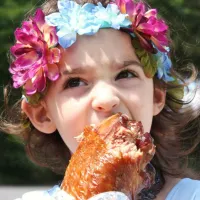
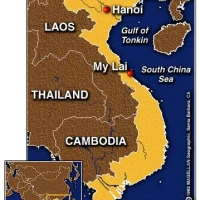


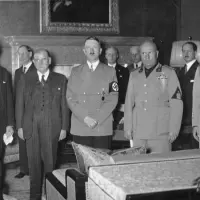
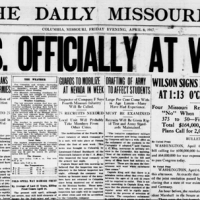

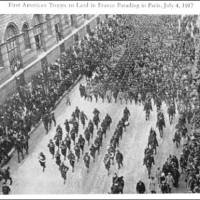


Wow. An amazing post. You must have put some time into this one. I agree with your assessment of Halloween in Australia. Here it is very commercial driven and is evident in all the merchandise on sale. I think we are ‘copy cats’, or at least are trying to mirror what is done in the States.We don’t celebrate it much in my household, but the kids like to dress up sometimes for school. Funny though, my profile picture is from Halloween a few years back. Might have to recycle it for a very brief post. Probably will just post the photo with a happy Halloween greeting. Lol.
LikeLike
Thanks for reading. We say every year that we are going to put a little more effort into decorating but time gets away so we just put out a few pumpkins. This is the first year my daughter isn’t going trick or treating. She is a teen so now its a friends costume party.
LikeLike
so interesting!
LikeLike
Thanks
LikeLike